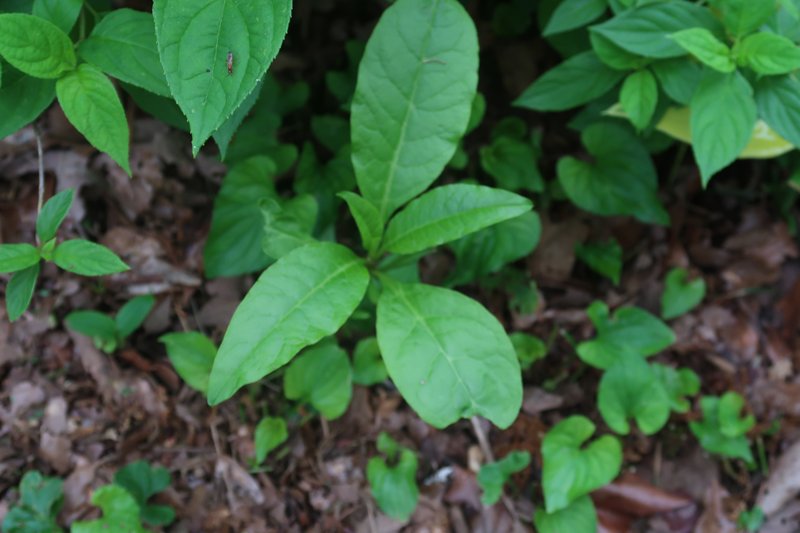What Plants Don't Like Epsom Salt? Tips for Better Plant Treatment
Wiki Article
Discover the Details Plants That Are Adversely Influenced by Epsom Salt Application
Epsom salt, a prominent home remedy for different gardening issues, is frequently applauded for its useful impacts on plant growth. Comprehending the details plants that can be negatively affected by Epsom salt is vital for any kind of gardener looking to enhance their plant care regimen.Roses

Roses, specifically sensitive to adjustments in their environment, can be negatively influenced by the application of Epsom salt. While Epsom salt is commonly utilized as a fertilizer to advertise plant development and enhance blooming, roses are among the plants that do not react well to its application. The high magnesium content in Epsom salt can conflict with the uptake of other vital nutrients by the rose plants, causing shortages that show up as yellowing leaves or stunted growth.

Tomatoes
While Epsom salt is often promoted as a treatment for various plant concerns, including blossom end rot in tomatoes, its application can lead to destructive end results if not made use of sensibly. Extreme Epsom salt, which is magnesium sulfate, can interfere with the fragile nutrient balance needed by tomatoes, potentially leading to shortages in various other necessary nutrients like calcium. When taking into consideration the usage of Epsom salt on tomatoes, it is crucial to adhere to advised application prices and soil screening to protect against unplanned repercussions on the general wellness and performance of these cherished yard plants.Peppers
Peppers, revered for their various colors and degrees of spiciness, can demonstrate vulnerability to adverse effects from Epsom salt when not applied with care and consideration for their specific dietary demands. what plants don't like epsom salt. Peppers, belonging to the Solanaceae family, require a delicate equilibrium of nutrients to flourish. While Epsom salt is known to boost magnesium degrees in plants, extreme application can disrupt this equilibrium, bring about negative effects on pepper plantsWhen peppers are exposed to high levels of magnesium from Epsom salt, it can disrupt the plant's ability to absorb other important nutrients like calcium and potassium. This inequality might materialize in symptoms such as leaf staining, stunted growth, and decreased fruit manufacturing. Additionally, the extreme magnesium can alter the soil pH, more intensifying nutrient uptake problems for peppers.

Rhododendrons
Provided the sensitivity of particular plant varieties to imbalances brought on by Epsom salt, it is necessary to consider the influence on Rhododendrons, which also require particular nutrient levels to grow. Rhododendrons are acid-loving plants that favor acidic soil problems with a pH array in between 4.5 and 6.0. Epsom salt, chemically called magnesium sulfate, can modify the soil pH and interfere with the fragile balance of nutrients necessary for Rhododendron health.
To maintain the optimum growth and health and wellness of Rhododendrons, it is critical to prevent the indiscriminate use Epsom salt and rather concentrate on offering the specific acidic dirt problems and nutrients that these plants require for growing.
Azaleas
Azaleas, recognized for their lively blossoms and wide series of colors, are ornamental bushes that come from the Rhododendron genus. These preferred blooming plants are typically found in landscapes, gardens, and parks due to their elegance and flexibility. Azaleas are sensitive to adjustments in soil pH degrees, which can significantly impact their development and total health and wellness. While Epsom salt is commonly utilized as a solution navigate here for magnesium deficiency in plants, its application to azaleas can have negative effects.Azaleas favor a little acidic dirt problems, and an extra of magnesium from Epsom salt can disrupt this balance, leading to nutrient inequalities and possible toxicity concerns. The wrong application of Epsom salt can result in stunted development, yellowing of leaves, and general decrease in the wellness of azaleas.
Verdict
Finally, it is necessary to be knowledgeable about the particular plants that can be detrimentally influenced by the application of Epsom salt. Roses, tomatoes, rhododendrons, peppers, and azaleas are some examples of plants that may not take advantage of Epsom salt and can even experience harm. It is vital to research and recognize the requirements of each plant species before making use of Epsom salt as a fertilizer to ensure their wellness and wellness.
Recognizing the details plants that can be detrimentally influenced find by Epsom salt is essential for any type of gardener looking to maximize their plant treatment routine. While Epsom salt is frequently made use of as a plant food to promote plant development and boost flowering, roses are one of the plants that do not react well to its application.Extreme usage of Epsom salt can likewise result in a build-up of salts in the dirt, leading to root damages and dehydration of the rose plants. While Epsom salt is known to enhance magnesium levels in plants, too much application can interrupt this equilibrium, leading to negative read this results on pepper plants.
The high salt material in Epsom salt can likewise dry out Rhododendron origins, causing more tension and damages to the plant. (what plants don't like epsom salt)
Report this wiki page